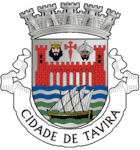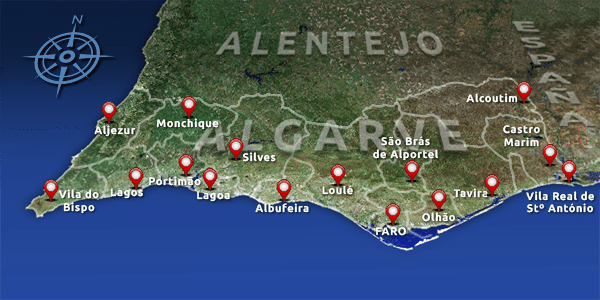 Tavira What to discover and how to enjoy your visit
Tavira What to discover and how to enjoy your visit

 The Municipality of Tavira is divided into the following parishes: Conceição and Cabanas de Tavira; Cachopo; Luz de Tavira and Santo Estêvão; Santa Catarina da Fonte do Bispo; Santa Luzia; Tavira (Santa Maria e Santiago)
The Municipality of Tavira is divided into the following parishes: Conceição and Cabanas de Tavira; Cachopo; Luz de Tavira and Santo Estêvão; Santa Catarina da Fonte do Bispo; Santa Luzia; Tavira (Santa Maria e Santiago)
Municipal Holiday: 24th June
Inhabitantes: around 26,150
Area: 607 km²
Tavira, rich in historic heritage, with its Praça Principal (Main Square), 37 churches and monuments, (not forgetting the magnificent castle) affords an enriching experience when strolling about the town. From the top of the Torre (tower) de Tavira, the visitor can enjoy a fascinating view of this beautiful town. The Jardim (garden) down by the river Gilão offers agreeable moments of peace and relaxation.
Originating as a fishing town, local cooking is based on seafood, preparing dishes such as cuttlefish in ink, fried squid, tuna and octopus – in a variety of ways. The specialities from the hill region are roasted leg of kid and corn porridge with chicken, with fig cake or Tavira’s own delicious puff pastry for desert. Local events include, among others, a monthly market to sell biological produce.
If you are a nature lover, then there is good reason to cross the river to Tavira Island and get to know the beaches at Cabanas or Barril, with their beautiful landscapes between the dunes and also the Cemitério das Âncoras (anchor graveyard). All these islands are part of the Nature Reserve of Ria Formosa, therefore offering opportunities to see local flora and bird life.
The Barrocal (hinterland) of Tavira also has a variety of points of interest.
The Parish of Santo Estevão (St. Stephen) is about 17 Km from Tavira. Following on from the direction of Moinhos da Rocha (windmills of the rock), is the Pêgo do Inferno, an ideal spot to relax and hear the sounds of nature. Sounds from small cascades that form the source of the River de Asseca, on whose banks can be found turtles, toads, frogs and hedgehogs.
The Parque das Merendas, in Santa Catarina da Fonte do Bispo, is a place planted predominately with pine trees, making an agreeable picnic area. The chameleon, an endearing animal already in danger of extinction, can be found here in its natural habitat.
The village of Cachopo organises, in May, a Craftwork Fair, where artisans share the secrets of their art with visitors. The Museological Centre is also worth a visit.
In the Parish of Santa Luzia in Pedras d’El Rei, there is an olive tree two thousand years old, with branches stretching up over 7.7 metres and 11.8 metres wide.



Move your mouse over the aerial view of the Algarve and click on the chosen destination.

